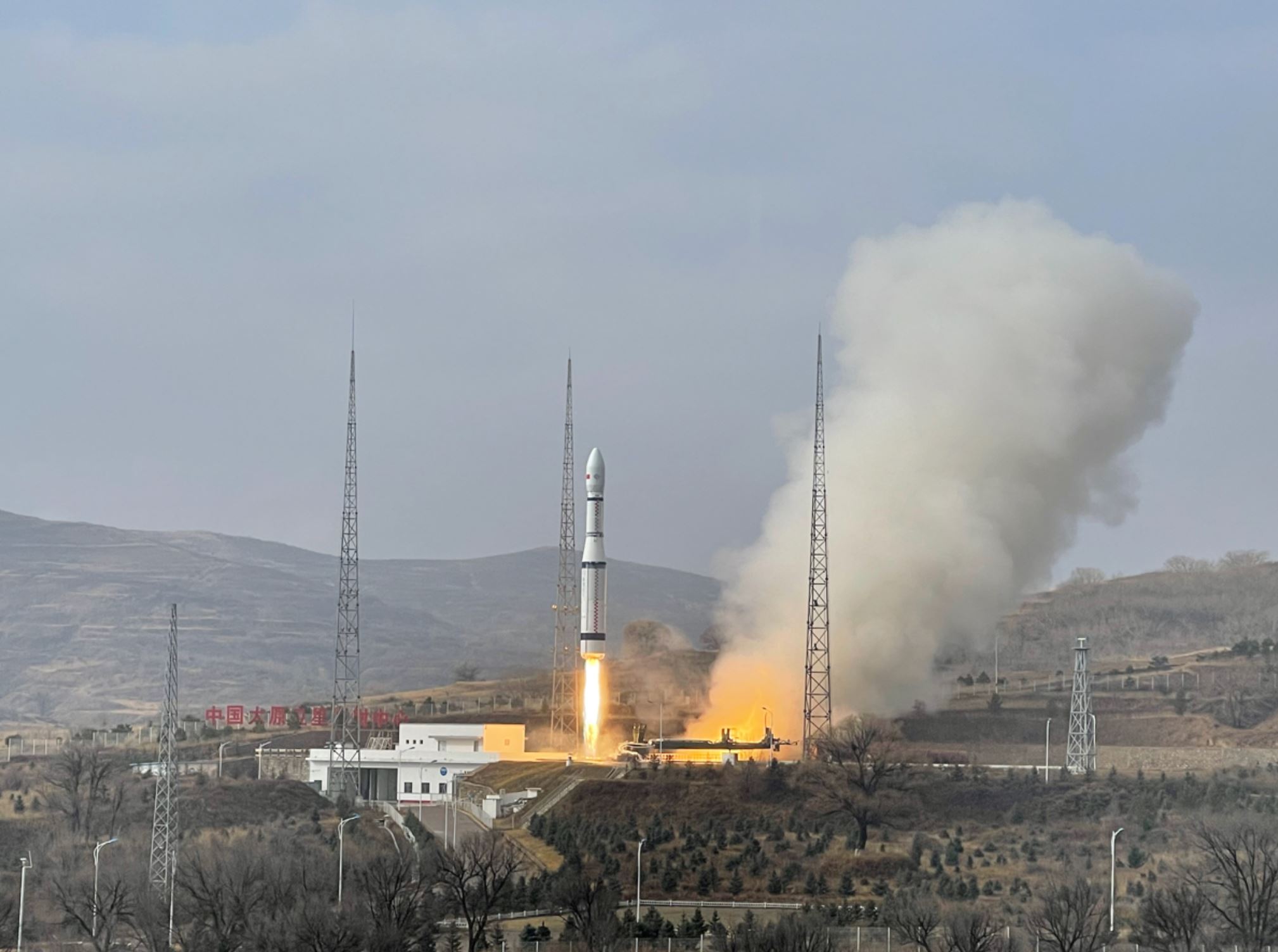China launches sustainable development satellite SDGSAT-1 to study Earth from space
The satellite will observe interactions between human activities and nature.
China continued its rapid pace of space launches late Thursday by sending a satellite into orbit as part of the UN 2030 Agenda for Sustainable Development.
A Long March 6 rocket, one of China's new-generation launch vehicles, lifted off from among the hills surrounding Taiyuan Satellite Launch Center in north China at 10:19 p.m. Eastern time Nov. 4 (0219 GMT, 10:19 a.m. local time, Nov. 5).
The mission's satellite SDGSAT-1, which China's CCTV news service called Guangmu, is designed to orbit at an altitude of around 314 miles (505 kilometers) and use thermal infrared, low light level and multispectral cameras to collect data to help evaluate the Sustainable Development Goals indicators. The data will be used to assess the impacts and changes through the interaction between human urban, residential and coastal activities and nature.
Related: The latest news about China's space program

Data services from the satellite will be made available within half a year of the launch, according to a 2020 paper on the progress of the satellite from the Chinese Academy of Sciences (CAS).
The roughly 1,631 lb. (740 kilograms) SDGSAT-1 was developed by CAS, and was earlier known as the CASEarth satellite. The satellite began as part of CAS's Project on Big Earth Data Science Engineering.
The Long March 6 that launched the mission was developed by the Shanghai Academy of Spaceflight Technology (SAST), a major rocket and spacecraft maker belonging to the China Aerospace Science and Technology Corporation (CASC), the country’s state-owned main space contractor.
The rocket first launched in 2015 and has now launched eight times in total. Half of these have taken place in 2021 alone, suggesting the rocket is beginning to play a bigger part in China's launch plans.
Get the Space.com Newsletter
Breaking space news, the latest updates on rocket launches, skywatching events and more!
Unlike many of China's older Long March rockets, the new generation Long March 6 uses highly refined kerosene and liquid oxygen for propellant.
SAST is also preparing to launch its first Long March 6A. Despite the name, the new rocket will be quite different from the standard Long March 6 and will be the first Chinese launcher to combine a liquid propellant core stage with solid side boosters.
The launch was China's 42nd of 2021, extending the country's newly-set national record for orbital launches in a calendar year. In comparison the United States has launched 39 times so far in 2021, including Rocket Lab launches from New Zealand.
Follow us on Twitter @Spacedotcom and on Facebook.
Join our Space Forums to keep talking space on the latest missions, night sky and more! And if you have a news tip, correction or comment, let us know at: community@space.com.

Andrew is a freelance space journalist with a focus on reporting on China's rapidly growing space sector. He began writing for Space.com in 2019 and writes for SpaceNews, IEEE Spectrum, National Geographic, Sky & Telescope, New Scientist and others. Andrew first caught the space bug when, as a youngster, he saw Voyager images of other worlds in our solar system for the first time. Away from space, Andrew enjoys trail running in the forests of Finland. You can follow him on Twitter @AJ_FI.








